Introduction
Water is an important nutrient, and it is required in larger amounts by the animal compared with humans. Water contributes to 75 percent of the body weight in calves, making this nutrient an essential daily requirement. The amount of water consumed by the animal depends on animal size, milk production, environmental temperature, feed intake and mineral intake.
Providing water for dairy calves is often an overlooked aspect in calf management programs. Despite concerns related to diarrhea incidences, and combatting freezing temperatures, water is necessary for various biological functions, including a calf’s metabolism.
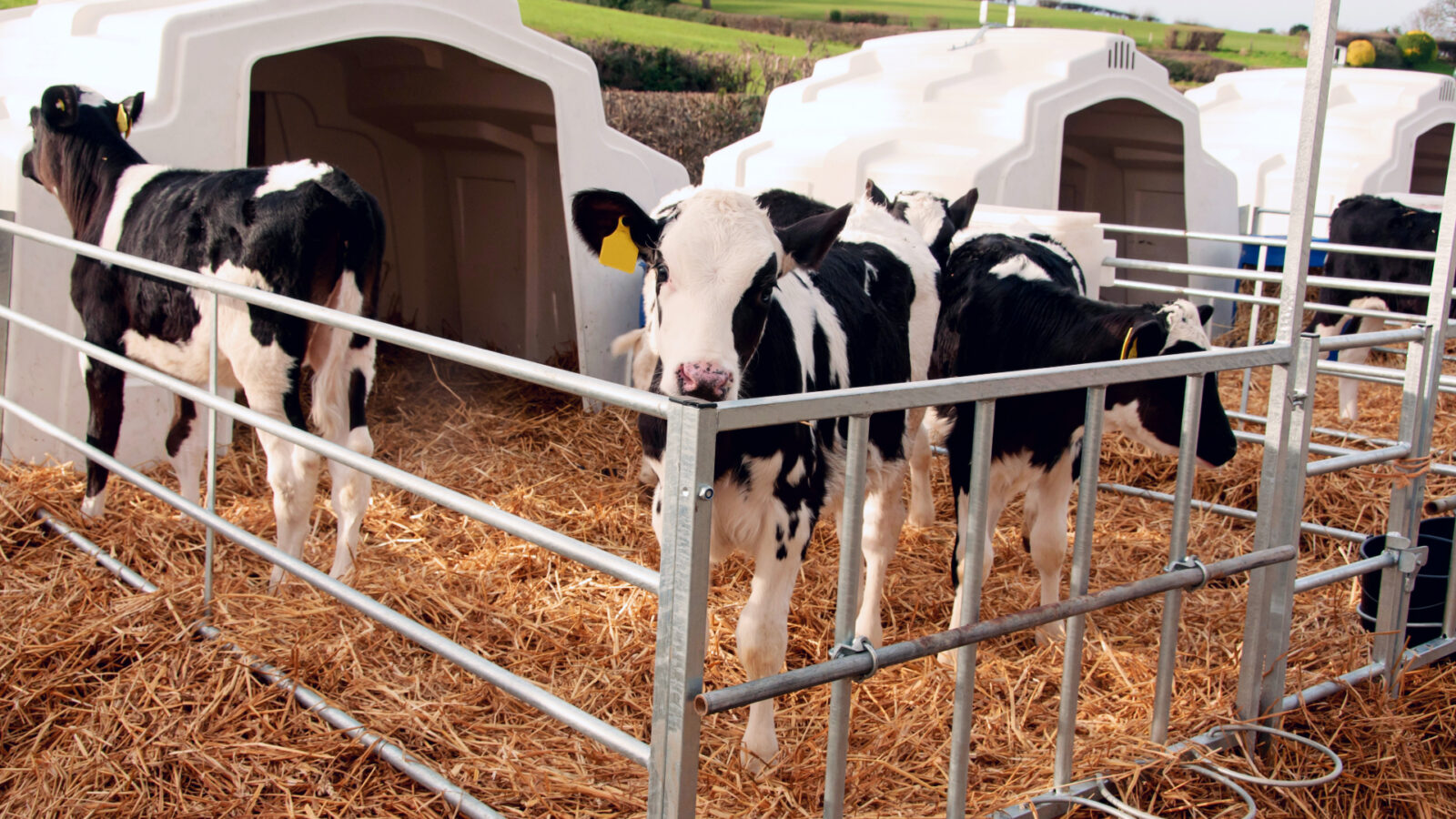
Why water is important for a calf?
Body water vs Body fat
When calves are born, their body is made up of 70% water, while the body fat percentage is around 3-5%. An opposite relationship exists between body water and body fat. So as an animal grows and deposits more fat, the fat takes the place of body water. However, a critical factor for young calves is when they have diarrhea, they immediately lose body water. If they lose around 4% of body water, the osmo-receptors react to encourage the calf to drink more water to increase water consumption. However, if the body water loss increases to 8-10%, Intravenous or oral treatment, such as electrolyte solution, are necessary to ensure adequate hydration.
Daily water needs for calves
| Age | Gallons | Liters |
|---|---|---|
| 1 Month | 1.3 – 2.0 | 4.9 – 7.6 |
| 2 Month | 1.5 – 2.4 | 5.7 – 9.1 |
| 3 Month | 2.1 – 2.8 | 7.9 – 10.6 |
| 4 Month | 3.0 – 3.5 | 11.4 – 13.2 |
Rumen development
Rumen microorganisms require water to ferment effectively. Water serves a crucial function in the rumen by aiding in rumen development. Water aids in this development by diluting volatile fatty acids (VFAs) produced by the rumen1. This dilution enables bacteria to generate additional VFAs, which in turn provide essential nutrition to the animal, and will support the papillae growth in the rumen. If there is a shortage of water, these microbes cannot thrive, leading to decreased volatile fatty acid production (VFA)1.
Milk replacer and whole milk contain water, yet the water they contain is not sufficient to boost calf starter consumption. In addition, the majority of the water consumed from milk sources does not enter the rumen and thus is unable to assist with facilitation of the environment required for bacteria growth due to the stage of rumen development at this age. Therefore, offering water freely the optimal approach. Water provided at all times enhances starter intake and weight gain, particularly in terms of muscle and skeletal development during the initial two months of life. This, in turn, is positively associated with milk yield during the first lactation. (For more information about rumen development in calves, reference the following resource: https://dairy.extension.wisc.edu/articles/the-overview-of-the-digestive-system-of-the-calves/)
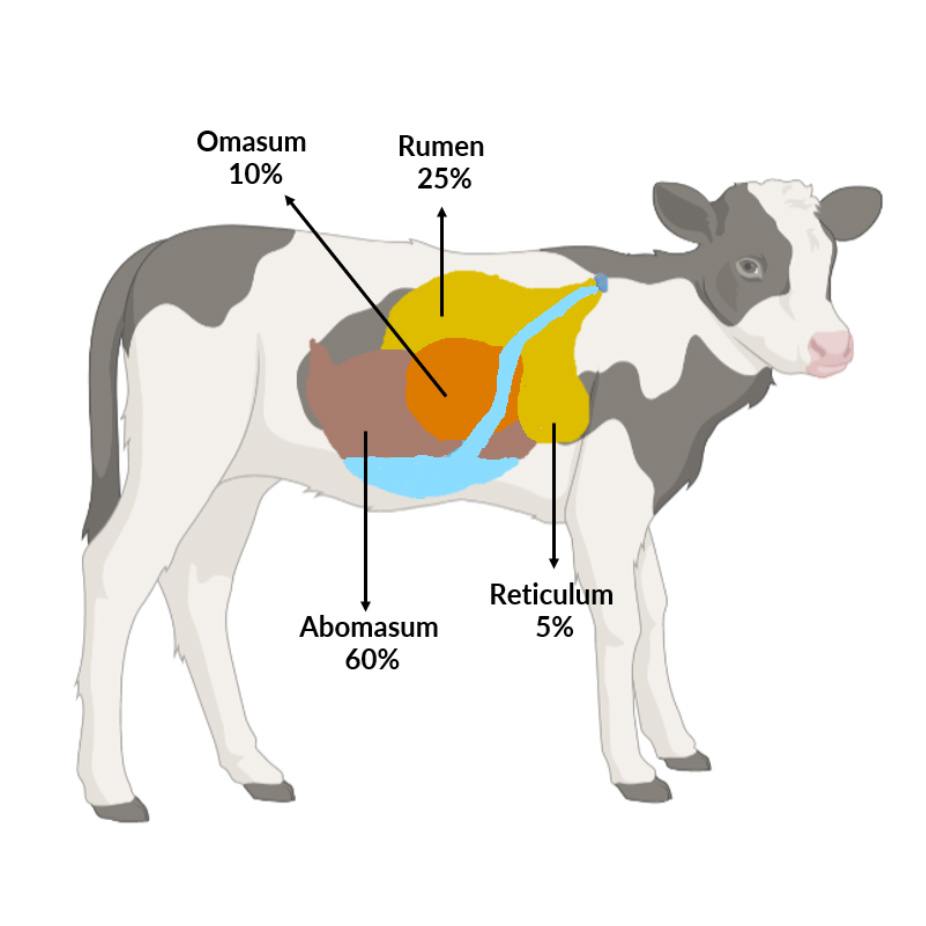
Ratio 4:1. Correlation of water intake and Dry matter intake
Another important correlation is existing between dry matter intake and water intake. If water intake is limited, dry matter intake may be limited as well. For this reason, calves need 4 times more water than dry matter intake2. Ruminants use water to transport nutrients throughout the body and it is involved in every aspect of the calf’s metabolism. Water is also needed to regulate body temperature and eliminate waste. According to research recommendations, the overall ratio of water to dry matter intake is about 4:1. This further highlights the importance of providing clean, fresh water for calves at all times.
Performance and intake of calves fed water with or without restriction
| Free water offers | Water restrictions | |
|---|---|---|
| Weight gain, lb./4 wk | 18.6 | 11.60 |
| Starter intake, lb./4 wk. | 25.8 | 17.8 |
| Feed efficiency gain/feed | 0.72 | 0.65 |
Adapted from Kertz et al., 1984. J. Dairy Sci.67:2964-2969
Water temperature
Another important factor is water temperature. Calves like warm water, especially in the wintertime. Cows even preferred warm ambient water (50 vs 86ᵒF) in hot summer conditions based on a literature recommendation4,5. Research indicates that calves tend to consume more water when it is warm compared to when it is cold before weaning6. After drinking water at a temperature of 45°F, the rumen requires approximately an hour for the rumen temperature to return to nearly normal levels. Providing water with temperatures of 63ᵒF, 81ᵒF and 99ᵒF can produce less rumen temperature drops, but it still requires about an hour for rumen to return to the normal temperature5 (Figure 1). In winter weather, water remains critical for calves. With each breath, a calf exhales more moisture into the drier, colder winter air than they inhaled, which leads to losing more body water with each breath compared to warmer air conditions like spring or summer. Providing warm water to calves during cold temperatures benefits calves by not requiring their body to use additional energy to warm colder water to rumen temperature.
Figure 1. Interpolated graph of effect of water consumption temperature on calf rumen temperature after drinking.
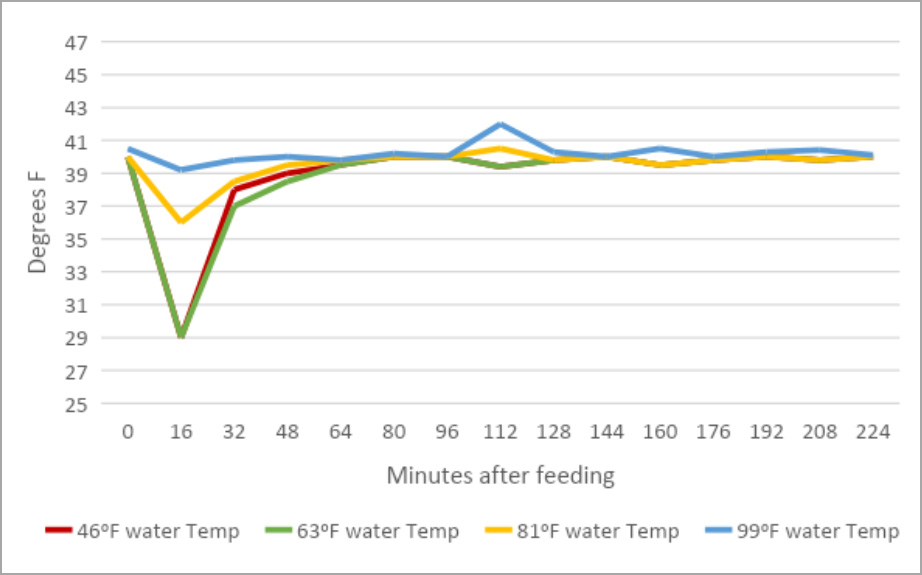
The cleanliness of the water buckets
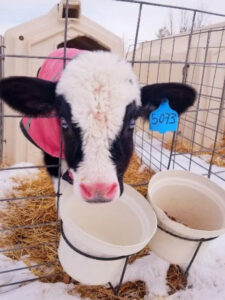
Various factors may impact water availability and overall management of providing clean, fresh water to calves at all times. Some of these factors are water contamination, water temperature, freezing water in cold weather restricting consumption, dirty buckets and more. These factors directly affect rumen development, health, and performance of the animal. Various studies involving the consumption of water confirmed that calves whose buckets were rinsed daily gained more pounds per day prior to weaning, compared to calves with buckets rinsed weekly or rinsed every 14 days7,8. In fact, calves with buckets rinsed every 2 weeks required more treatments for illnesses, due to the contamination with feed and manure, than calves with clean buckets daily or weekly7,8. Bucket cleanliness is key. Ideally, buckets should be emptied daily, as well as cleaned and scrubbed with a brush using a weak bleach water solution (1/4 cup bleach in 1.25-gal water) at least once per week.
Conclusions
Calves, typically require and consume about four times more water than dry matter intake. This 4:1 ratio serves as a useful guideline for estimating the necessary dietary water intake at various stages of development. Limiting water intake can limit dry matter intake and negatively affect calf performance. Providing water warm for calves, especially in colder weather, can benefit rumen development, increase starter intake, and weight gain, and growth performance.
Reviewed by – Faith Reyes
References
- Liu, Y. R., et al. “Branched-chain volatile fatty acids and folic acids accelerated the growth of Holstein dairy calves by stimulating nutrient digestion and rumen metabolism.” animal 14.6 (2020): 1176-1183.
- Quigley, J. D., T. A. Wolfe, and T. H. Elsasser. “Effects of additional milk replacer feeding on calf health, growth, and selected blood metabolites in calves.” Journal of dairy science 89.1 (2006): 207-216.
- Kertz, A. F., L. F. Reutzel, and J. H. Mahoney. “Ad libitum water intake by neonatal calves and its relationship to calf starter intake, weight gain, feces score, and season.” Journal of dairy science 67.12 (1984): 2964-2969.
- Zhang, Zhanhe, et al. “Drinking water temperature preferred by Holstein calves under different temperature-humidity index conditions.” Livestock Science 263 (2022): 105030.
- Dracy, Arthur E., and A. J. Kurtenbach. “Temperature change within the rumen, crop area, and rectal area when liquid of various temperatures was fed to calves.” Journal of Dairy Science 51.11 (1968): 1787-1790.
- Huuskonen, Arto, Leena Tuomisto, and Risto Kauppinen. “Effect of drinking water temperature on water intake and performance of dairy calves.” Journal of dairy science 94.5 (2011): 2475-2480.
- Heinemann, Céline, et al. “Hygiene management in newborn individually housed dairy calves focusing on housing and feeding practices.” Journal of animal science 99.1 (2021): skaa391.
- Mandel, C., et al. “Predictors of time to dairy calf bucket training.” Journal of dairy science 100.12 (2017): 9769-9774.



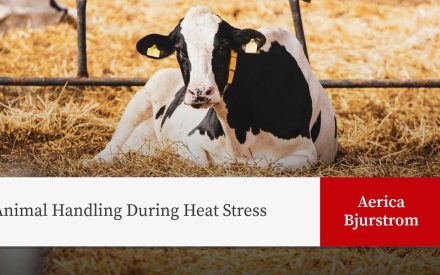 Animal Handling During Heat Stress
Animal Handling During Heat Stress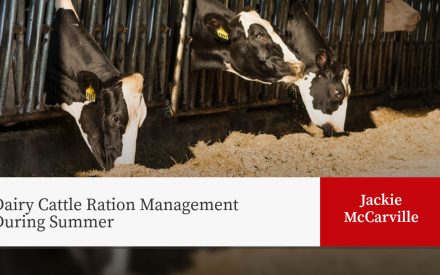 Dairy Cattle Ration Management During Summer
Dairy Cattle Ration Management During Summer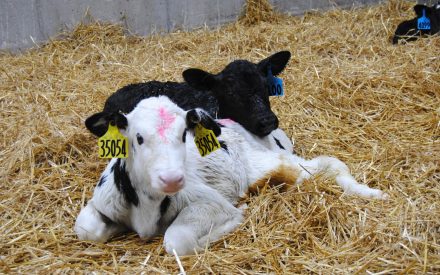 Animal care starts with calf care
Animal care starts with calf care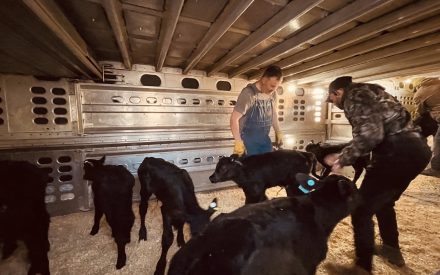 Are your calves ready for the long haul?
Are your calves ready for the long haul?


